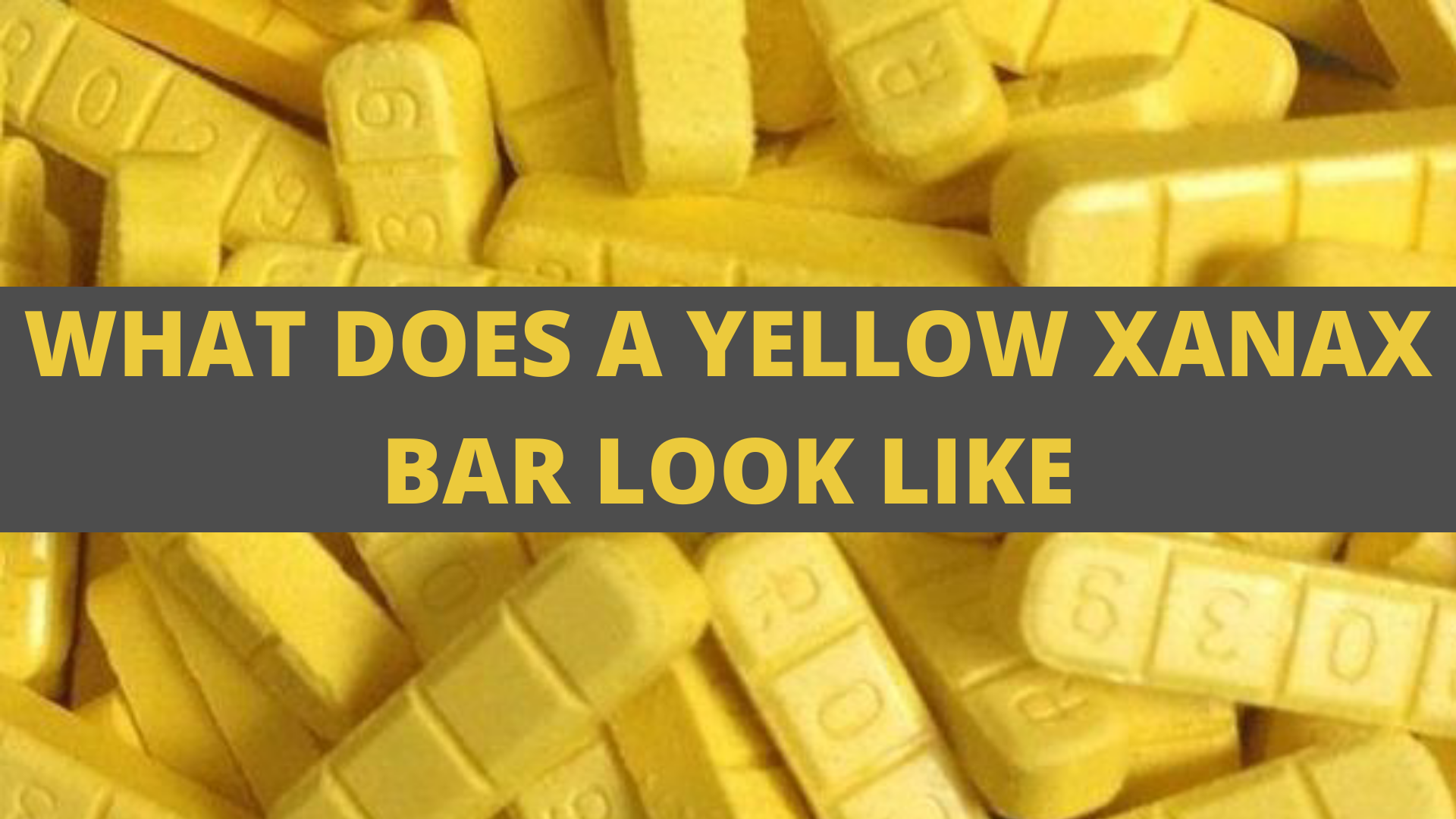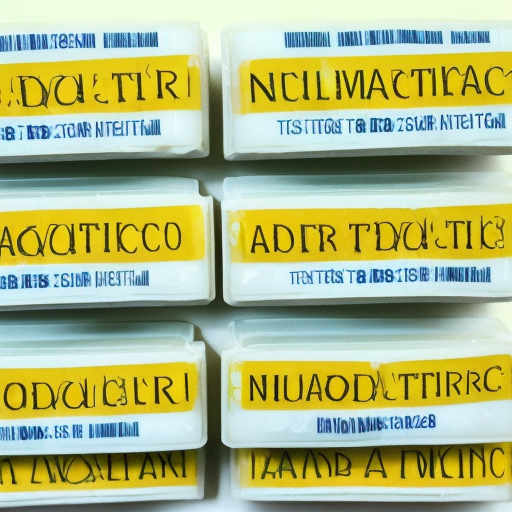Uncategorized
Can you provide a description of what a yellow Xanax bar looks like? – ChatGPT No RX Pharmacy
Xanax and its Use in Treating Anxiety and Panic Disorders
Xanax, also known as alprazolam, is a benzodiazepine that is commonly prescribed for the treatment of anxiety and panic disorders. Its mechanism of action involves enhancing the effects of the neurotransmitter GABA (Gamma-aminobutyric Acid) in the brain, which reduces the transfer of messages between nerve cells. This results in a calming and relaxing effect that lessens the symptoms of anxiety and panic attacks.
Yellow Xanax Bars: What are They?
Yellow Xanax bars are a form of Xanax that contains 2mg of activated alprazolam. They are similar in strength to blue or white Xanax bars but are differentiated by their yellow color, which is due to the manufacturing company. Street peddlers often refer to them as “Yellow School Bus” or “Yellow bus” since they resemble a school bus in shape.
Appearance and Withdrawal Symptoms of Yellow Xanax Bars
Yellow Xanax bars are cuboid in shape with softened edges and have “R039” imprinted on one side. They can be broken into smaller portions due to pre-existing grooves and lines. Withdrawal symptoms may occur if the medication has been used regularly for an extended period or in high doses. These symptoms include anxiety, restlessness, insomnia, depression, tremors, and seizures. Gradual reduction of dosage is recommended to avoid withdrawal reactions.
Addiction to Yellow Xanax Bars
Yellow Xanax bars can be highly addictive and habit-forming due to their classification as a level IV controlled substance. Prolonged use can lead to tolerance, dependency, and addiction. Individuals with a history of drug misuse or abuse are at higher risk of addiction. Signs of addiction include continued use despite increasing side-effects, inability to stop using, obsessing over obtaining the medication, and loss of control over the amount consumed. Overdose can occur, leading to severe consequences, including death.
Duration of Yellow Xanax Bars in the System
Xanax is absorbed quickly into the body and reaches peak concentration within 1-2 hours. The half-life of the Yellow Xanax bar is 11 hours, with a range of 6-27 hours. It takes approximately 5-6 half-lives for the medication to leave the system entirely. Detection of Xanax in the blood can last up to 4-5 days, in hair follicles up to 3 months, and in urine up to 5 days after the last dose. Factors such as age, metabolism, liver and kidney function, diet, and duration and strength of Xanax can affect detection times.

Xanax or alprazolam is used to treat anxiety and panic disorders. It is a benzodiazepine which functions on the brain to produce a calming and relaxing effect. It enhances the impact of a particular neurotransmitter GABA (Gamma-aminobutyric Acid), which lowers the message transfer between nerve cells. GABA functions to decrease the initiation, sending and receiving of messages from one nerve cell to the other, which lessens the symptoms of anxiety and panic attacks.
What are Yellow Xanax bars?
Xanax is available in various doses, which can be differentiated by colour. A Yellow Xanax Bar has 2mg activated alprazolam, similar to a blue or a white Xanax bar. The colour difference is due to the different manufacturing companies.
The street name for Yellow Xanax is “Yellow School Bus” or “Yellow bus”, which is popular among drug abusers and sellers as non-prescription medication. Because of its higher dose strength, it is prescribed to patients with moderate to severe symptoms of anxiety and panic attacks.
What do yellow Xanax bars look like?
Yellow Xanax bars, true to their name, are yellow and are shaped like a cuboid, softened at the edges. They have “R039” imprinted on one side. They are often referred to as “yellow school bus” among street peddlers since it looks similar. It has pre-existing grooves and lines making it easier to break it into smaller portions if you have to take a smaller dose. Xanax stays in a person’s system for around 12 to 15 hours.
Withdrawal symptoms of Yellow Xanax Bar
Yellow Xanax may cause withdrawal reactions, primarily if it has been used regularly for a long time or in high doses. In such cases, withdrawal symptoms like seizures might occur if you abruptly stop using it. It would be best to lower your dosage gradually instead of going cold turkey based on your doctor’s advice to avoid such a scenario.
The withdrawal symptoms include anxiety, restlessness, insomnia, depression and tremors. The product of tolerance and withdrawal are indications of addiction. The symptoms of withdrawal can last up to a year or more.
Addiction to Yellow Xanax Bar
Yellow Xanax Bars can be highly addictive and habit-forming as it is a level IV controlled substance, so it also has an increased possibility of misuse and abuse.
Xanax, when used for an extended period, can develop tolerance because of which there is an increase in the doses. The increase in quantities can result in dependency, and dependency later can lead to addiction.
One is more likely to get addicted to Xanax if they have previously misused or abused drugs. It would be best if you disclosed this to your physician so they can prescribe the right amount of doses.
Behavioural signs of Xanax addiction include
1-Continued use of Xanax despite the increasing side-effects
2-Inability to stop using Xanax despite the desire or need to stop
3-Obsessing about obtaining Xanax
4-Loss of control over the amount of Xanax intake
Addiction to Xanax can also lead to overdose, which in severe cases may lead to death.
How long does the yellow Xanax bar stay in the system?
Xanax is absorbed into the body relatively quickly and reaches its peak concentration in 1 to 2 hours. The half-life of a drug is the amount of time it takes for half the dose to be eliminated from the system.
The half-life of the Yellow Xanax bar is 11 hours; however, the range is from 6 to 27 hours. An average person eliminates half of a Xanax dose from their system in about 11.2 hours. It takes 5-6 half-lives for a drug to leave the system entirely, and it can take a few days for the entire body to get rid of the total dose.
Some tests can detect the presence of Xanax in a variety of ways.
Blood – It can vary how long labs can detect Xanax in your blood, and Xanax can be found in the blood for up to 4 to 5 days.
Hair – Laboratories can detect Xanax in the hair follicle for up to 3 months since hair doesn’t grow as quickly. In some cases, lab tests can be positive for Xanax up to 12 months after taking the last dose.
Urine – Particular drug tests can detect Xanax in the urine for up to 5 days after the last dose.
These values depend on factors like age, metabolism, liver and kidney function, diet and the duration and strength of Xanax.

 Skip to content
Skip to content


